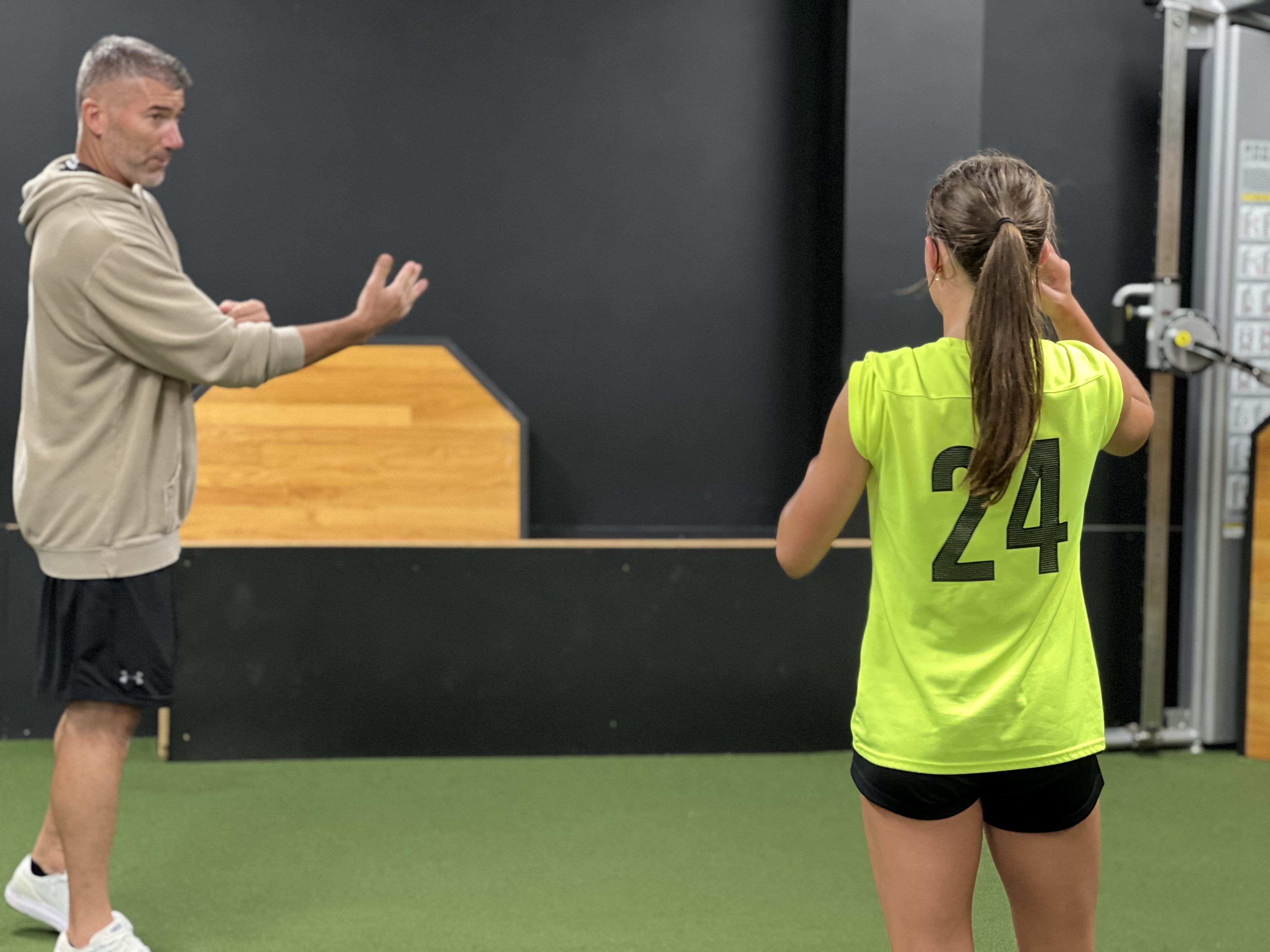
THE ATHLETE FIT SYSTEM
Our system is a continuous work in progress. Constantly challenging theories, evaluating strategies and looking to connect aspects of training with on-field performance has led us in a unique and interesting direction over the last three decades.
We are not a strength training company, but we do lift. We are not a speed training company, but we do teach acceleration mechanics. We are not a skill training company, but we do train with a ball when its necessary. The truth is, our system is built on the premise that all of these are essential, but the integration and connection between them is where the magic happens.
Impactful speed of play requires a confident understanding of the game, your role, your abilities, and the tactical objective. It requires you to move efficiently, think clearly, and trust your technical skill. Most of this should be developed in practice with your team. However...
The closer you look at team practice sessions, the more you see the gaps. Practices are typically tactical, team oriented with limited individual reps to improve specific aspects of your game. But if a player lacks the knowledge, skill or ability to perform their role at the level required, they lose confidence.
Our objective is to provide a training environment that builds confidence and athleticism through high repetition, individualized training on specific aspects that improve speed of play. And in my experience, this requires a deliberate focus on integration of skill, speed, fitness and power, developed within the context of how it will be applied on the field.

WHAT IS ATHLETICISM
This is a concept we discuss often with our staff interns and those interviewing for a job. And one thing always holds true…it leads to a very interesting discussion on what exactly is…Athleticism.
Most people can’t define it, and the most common answer is usually, “I just know it when I see it.” So I ask, “If you can’t define it, how can you develop it? How do you know what you’re looking for? How will you know where to focus your attention?”

I have learned, that everyone has a slightly different definition of athleticism. And their answer to the question is most likely based on their experiences, their interests and their own sport or training style.
Some answers seem to be more skewed towards physical fitness, others towards sport skill, and some towards force producing muscle qualities. And while all of these are factors that can enhance athleticism, they don’t come close to covering what I would consider the essential elements of athleticism.
So what’s my definition?
I feel that athleticism can be defined as:
Having optimal control and coordination of the body as it moves at high speeds, reacting and maneuvering through a dynamic environment, while successfully executing technical sport skills aligned with a specific tactical objective.
So is a golfer athletic? They have control and coordination of the body, moving at high speeds, performing a technical skill, etc. But they lack a critical piece of my definition…reacting and maneuvering through a dynamic (ever changing) environment. And I know a lot of really good golfers who would not consider themselves “athletic.”
Is running athletic? Same answer, often lacking “high speed maneuverability in a changing environment” and “technical sport skill” etc.
Sure a runner or golfer could be athletic, but it is not necessarily a requirement of their sport. Excelling at these sports, require high levels of technical skill, coordination, endurance or practice…but simply excelling at a sport, does not make you athletic unless the sport itself requires all definable qualities.
Here is what I consider to be the hierarchy of essential components of athleticism…
- Body control and coordination at high speeds
- Reactive maneuverability, agility
- Timing, precision and instinctive execution of sport skills in dynamic environments
- Calm, quick, optimal decision making, aligned with tactical objectives
A superior athlete would be able to perform a skill, reacting quickly and efficiently, at high speeds, in a dynamic environment while also making the most optimal decision, with perfect timing, on rhythm, as they out maneuver an opponent.
Basically, making the difficult task look easy and effortless.
So would a snowboarder be an athlete. In my opinion…yes. Even though they are not reacting to another person, they are maneuvering through changing conditions, new courses, performing highly technical skills at high speeds, making decisions quickly while controlling their body against the environment.
So where does strength and power come in?
If you have developed all the existing qualities of an athlete, and you get stronger in ways that allow you to move more explosively, strength may help you become more athletic. But this depends on how you use it. Getting stronger in the weight room only works if it accentuates your ability to control your body as you maneuver, react or separate from an opponent. If the type of strength you are developing doesn’t help these criteria, then it’s probably not contributing directly to your athletic development.
So where does skill come in?
Skill is entirely dependent upon the sport. Some skills transfer from sport to sport more efficiently than others, but skill is a a primary criteria. If you move well, but lack the confident efficiency in performing the skill, you would not be perceived as athletic within the context of that sport. The higher the level of sport participation, the more important skill acquisition becomes. For younger, or lower level players, where skill is not expected to be fully developed, spectators might see athletic potential independent of the skill. But as players age, and higher levels of sport skill becomes an expected part of the formula, a players athleticism will be judged by their ability to perform skills with precision at high levels of speed.
So where does speed come in?
Speed is also relative to the sport. Some sports require more speed than others. Like skill, the higher the level of competition, the more necessary it becomes. But speed is also a bit of a poorly defined term. I feel that athletic speed is more than just straight line running. There is a decision making speed component, a reactive speed component and a maneuverability at speed component. It’s not about developing fast 40’s (although it’s defiantly valuable), it’s about being able to maneuver at the highest speed in which you can still control your body in your environment relative to the tactical objective.
This is just my opinion. And I am always looking to debate this topic. There are many examples that might challenge my opinion, and I would welcome them. However, the important takeaway from this is that you need to be able to explain and justify your own definition. Otherwise, how will you know how to develop athleticism…and don’t say I’ll know it when I see it.
AGES 4-7 - THE FOUNDATION
Athleticism is not an inborn talent, it is developed through rigorous training and attention to detail. Sure, some athletes have more genetic potential, but if left unchallenged they won’t reach the level they could have.
At an early age, typically 4-7 years old, the windows for athletic development are wide open.
If the young person is exposed and challenged to a wide variety of motor skills and movement tasks they will most likely be in front of the curve.
The key is challenge…
At this age the body will learn more rapidly through errors. Falling, stumbling, finding balance, etc. will send cues to the brain that something needs to change. Guiding athletes through these errors and letting them figure out effective movement strategies are key.
Exposure to a wide variety is also important…
To be athletic, we need to be able to adjust and react efficiently to dynamic environments. We need to be exposed to problems and find movement related solutions in a rapid manner. Setting up obstacle courses, letting children find their own creative ways to navigate the course quickly and efficiently is a great foundational piece.
The essential skills that must be explored at this age would be, running, jumping, climbing, throwing, kicking, hoping, tumbling, avoiding, chasing, catching, etc.
Teaching these skills at this age should be performed in a “Guided Discovery” format. Not being critical of HOW they do it, but encouraging them to explore and then guiding their understanding of efficiency without limiting their creative mindset.

Ages 8-13 - Growth Stage
Between the ages of 8 and 13, these young developing athletes are ready for a more technical approach to sport skill. Using their athletic movement skill base, they begin to refine the sport related motor skills of throwing, catching, striking, volleying, kicking, etc. As well as the movement related motor skills of sprinting, jumping and changing directions.
Training becomes a bit more structured, but exposure to different ways of doing things is still critical.
It's important to allow athletes at this age to explore a variety of athletic challenges. This would include other sports, different positions, or competing against more mature or higher skilled players.
This stage is critical to the growth of the athlete, and coaches and parents play a valuable role.
To fully develop their talents, athletes must first become interested in the sport or activity. Then they must find an internal motivation, or desire to chase mastery. And finally they need to be put into an environment that forces them outside of their comfort zone, challenging their abilities, but not pushing them into a panic zone, where repeated failed attempts wrecks the developmental mindset.
Failed attempts are great teachers, but only when they are paired with an opportunity to learn.
Without guidance and encouragement, an aspiring athlete might lose interest, understanding or motivation to continue to push.
Coaches that place the athlete in a challenging, but manageable environment are essential. These coaches encourage the athlete to take creative risks, then guide them through this space with honest and impactful feedback. This helps expand the athletes understanding of variations that might be more efficient or optimal under specific conditions.
The athlete begins to see more clearly, move more strategically, and perform skills more effectively.
And this motivates them to push towards more challenging environments. No longer fearing temporary failures, they begin to push themselves to accumulate new skills and abilities.
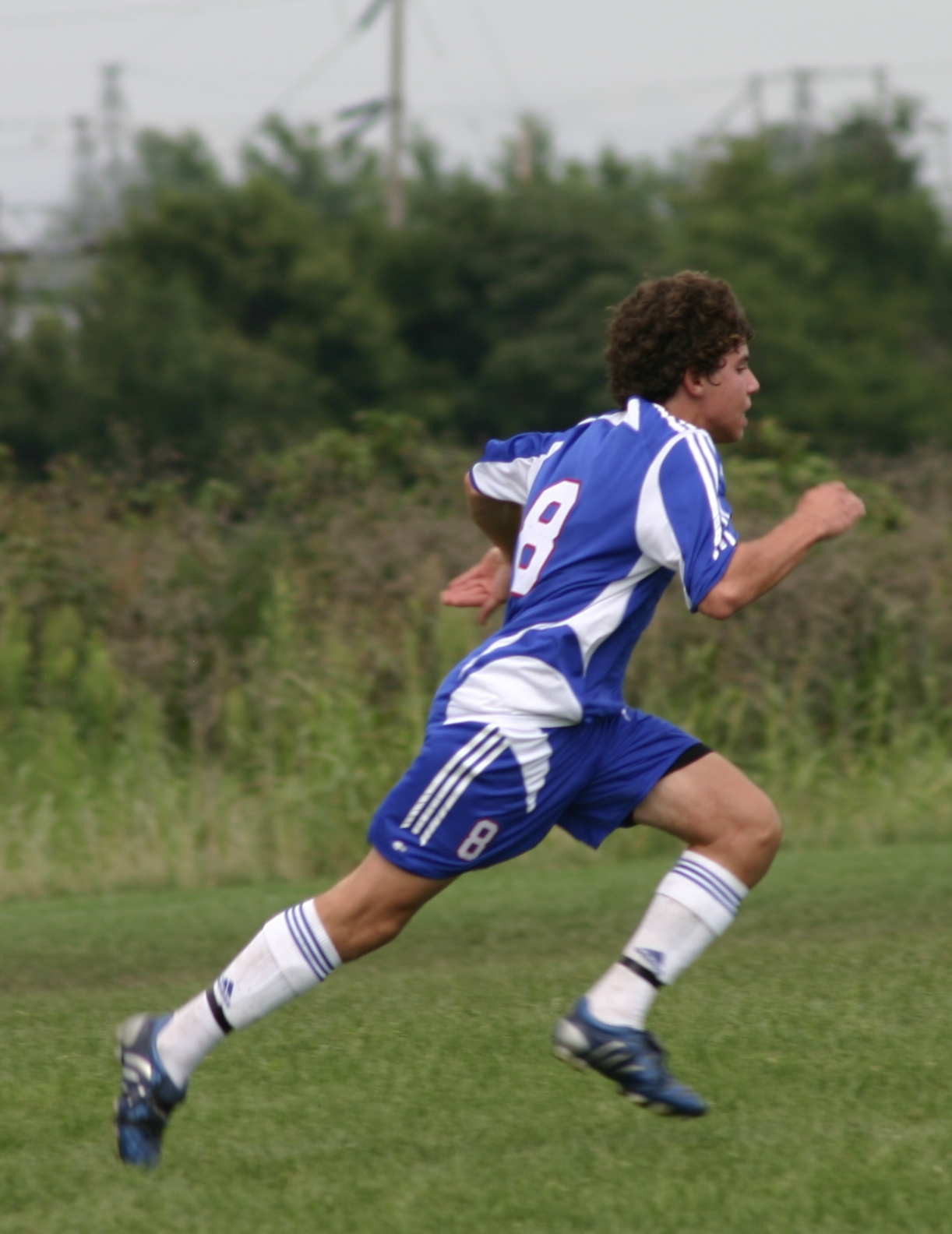
Ages 14-18 - Refinement Stage
Between the ages of 14 and 18 some athletes begin to separate themselves from other sport participants. By this stage, athletes typically know who they are, and who they are not.
Athletic factors like speed and skill, are now becoming more important.
To be seen as "athletic" in this stage, is no longer only about movement efficiency and coordination of sport skills. A new layer has been added. And now the athlete must be able to perform the skills efficiently, while reacting to a more tactically challenging environment. This is where a lack of speed becomes a limiting factor.
There are 3 types of speed that need to be developed at this stage...
- Physical Speed: rapid acceleration, deceleration and maneuverability around an opponent
- Technical Speed: quick, precise sport skills performed against fast moving opponents
- Processing Speed: the ability to see the problem, assess the situation and quickly make the optimal, tactically efficient decision in a dynamic environment
At this stage of development, to be viewed as "athletic" requires all three types of speed to be used simultaneously. If an player is fast, but can't process the game quickly enough, or lacks confidence with their sport skill to out maneuver an opponent, their speed will be a non-factor. They will be seen as un-athletic within the context of the sport.
Similarly, if an athlete has a high level of technical skill and situational knowledge, but can't out run, out jump or over power an opponent, some might say their "athleticism" is holding them back.
If exposure to many sports has broadened their foundational ability, then finding the most interesting sport, that fits their mindset, their physical gifts, and their technical skill set, is the key to success in this stage.
This is true, because to truly chase athletic mastery, we must be interested enough to push through the difficult times of development. We must be physically gifted enough to meet the baseline requirements of the sport. And we must be willing to develop skills within a reactive, competitive environment.

Ages 18-28 (peaking stage)
Between the ages of 18-28 the athlete is approaching their performance peak. This is the age where the muscles are most powerful and speed potential is at its highest.
The athlete begins to find their identity. They begin to understand what they need to do to maximize their ability to impact the game.
I like to think that those players who we view as superior athletes do a few things differently in this stage.
Whereas most people lose interest in creative exploration in their teens or early twenties. These superior athletes continue to push their boundaries in innovative ways.
They are so comfortable with their skills and abilities, that they can think and adapt on the fly. They are fearless and confident. They won't hesitate to try something new because the challenge excites them.
This creative exploration shows up in competition as they maneuver around an opponent. Then some unexpected problem shows up. Instead of shutting down, these players attack the problem at full speed manipulating their body or performing a skill in ways never seen before. Of course these athletes have performed similar skills thousands of times before, but never in this way, under these conditions at this speed.
The thousands of hours dedicated to understanding the sport, developing their physical abilities, and refining their technical skills all come together in a single moment in a truly unique mix that seems so simple and effective, but interesting and novel at the same time.
Michael Jordan against the Lakers in the finals with his mid-air, switch hands lay in. Patrick Mahomes no-look pass. Barry Sanders jump cuts weaving through a defense. Bo Jackson running up the wall after making a catch in the outfield. Odel Beckham's one handed catch while falling backwards into the endzone.
Each of these is so unique to the individual, and not something that was practiced exactly like it was performed.
This is the essence of athleticism in sport.
Having optimal control and coordination of the body as it moves at high speeds, reacting and maneuvering through a dynamic environment, while successfully executing technical sport skills aligned with a specific tactical objective.
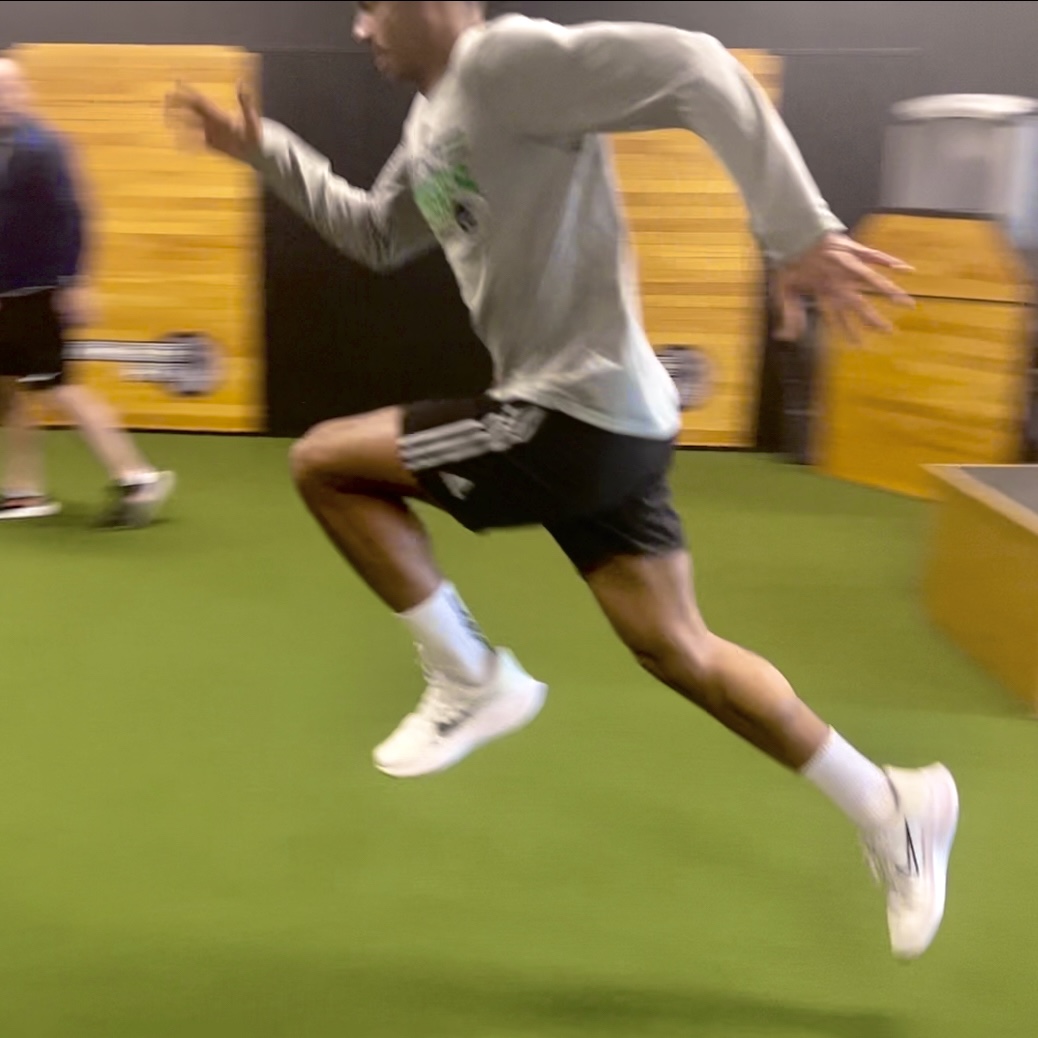
It starts with deeper dive into all trainable aspects of athleticism, and breaking them down into what is most relevant to success on the field.
FACTORS OF ATHLETICISM - SPEED OF PLAY
To avoid a long list, I thought I would lump the trainable factors into key categories. But keep in mind, these factors are interconnected and cannot be fully developed in isolation if we want to reach our potential.
Below are the categories, click on each to learn more about how we integrate and develop them.

ATHLETIC SKILL
We teach skill from an athletic perspective with a singular focus...repositioning the body around the ball to create an athletic and tactical advantage. This requires a blend of:
- athletic balance and coordination, quick repositioning footwork (agility)
- muscular endurance (rhythmic efficiency under fatigue)
- touch control, confidence to reposition the ball to create an advantage
- reactive, proprioception to adjust to situations, vision, seeing opportunities
- automated simple patterns blended into unique combinations, creative problem solving

ATHLETIC POWER
Power, from an athletic perspective, is a combination of movement synchronization, strength and speed. Our athletic power system can be broken down into the 5 'P's' of Performance:
- Positions: getting athletes into key biomechanical positions to optimize potential
- Patterns: rhythmic coordination as we move in and out of key positions
- Power: increase the load or speed in which they move through these patterns
- Precision: seeking precise, efficient, automated movement skill as it relates to speed
- Perspective: discussions with our athletes on how and where they would use this skill
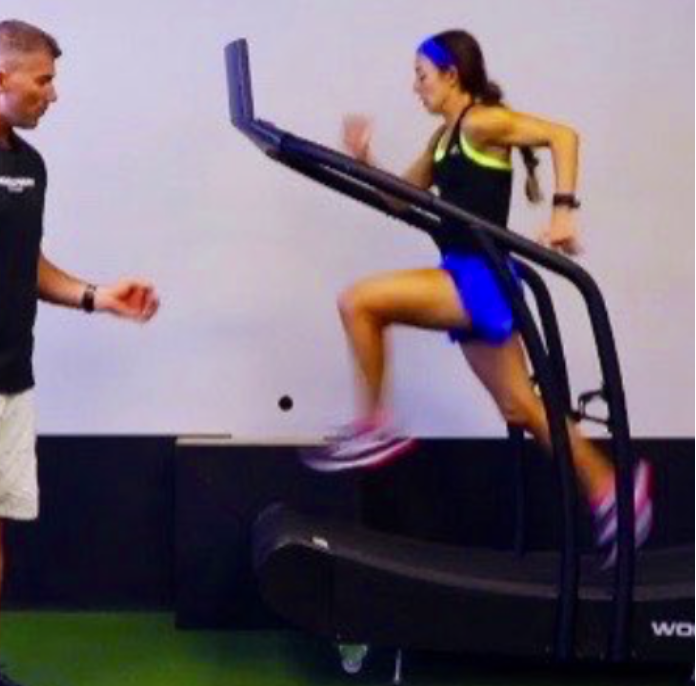
ATHLETIC ENDURANCE (GAMESPEED)
In sport we need a strong aerobic base of fitness, but more importantly we need to be able to repeat our speed, with good technique, focus and precision late in games. To achieve this goal, we look to develop a broader base of endurance:
- Aerobic Base (capacity to focus, and perform efficiently for longer bouts)
- Muscular Endurance (ability to train through fatigue)
- Repeated Speed (strong, powerful bursts with more rapid recovery)
- Maximum Speed (automated patterns, performed powerfully and efficiently)
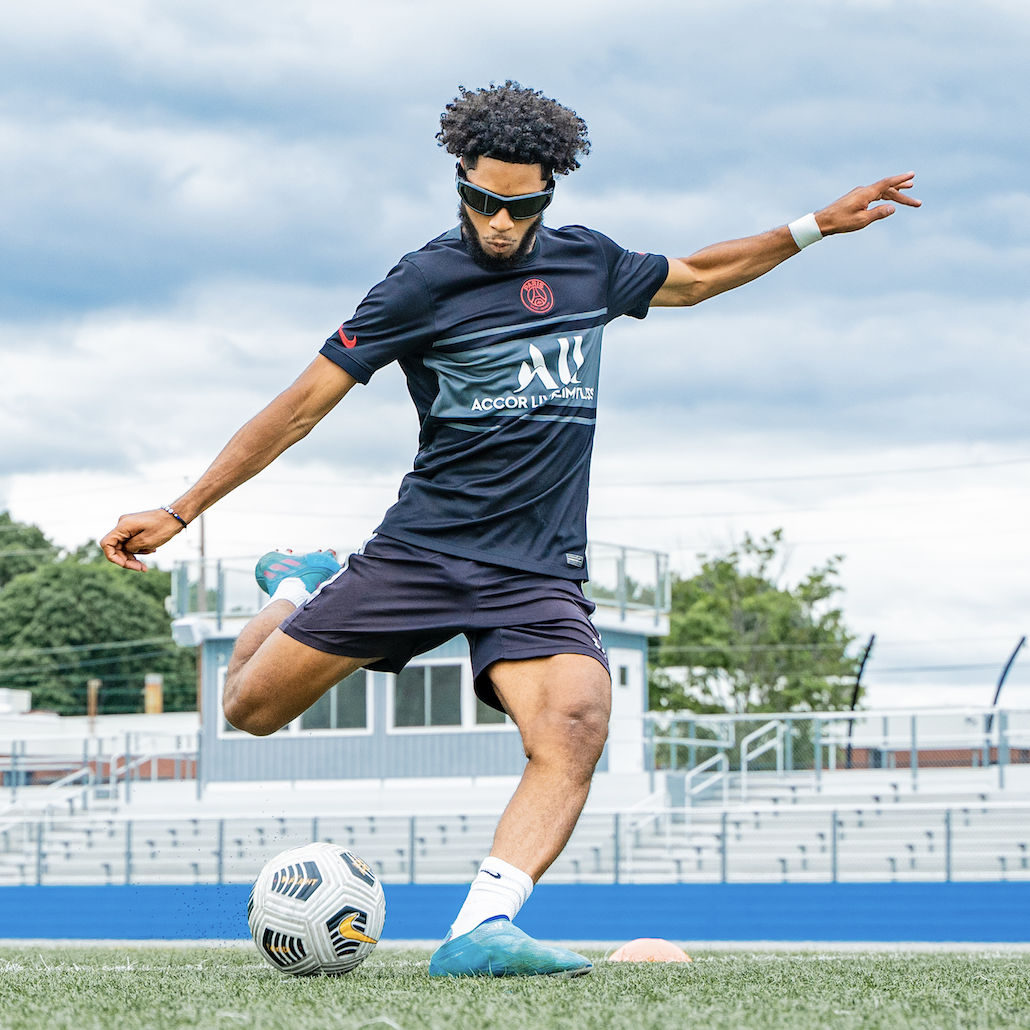
ATHLETIC SENSORY (VISION) TRAINING
The ultimate cognition sports vision training. Enables you to train the mind and body together to create a unique edge for athletes to perform at a higher level, more consistently, and with better decision making.

EQUIPMENT (FACILITY SET UP)
Our facility has changed over the years, and we have worked closely with equipment manufacturers and engineers to help design the most optimal equipment to enhance our performance training environment. Our facility features:
- Woodway Curve Treadmills and FTG's
- Cybex Arc Trainers
- Move Factor X Medicine Balls
- Swift Contact Mats
- Boxes and Stairs
- Enhanced Kick Platforms
- Free Weights
- TRX Bands
- Heart Rate Monitors
